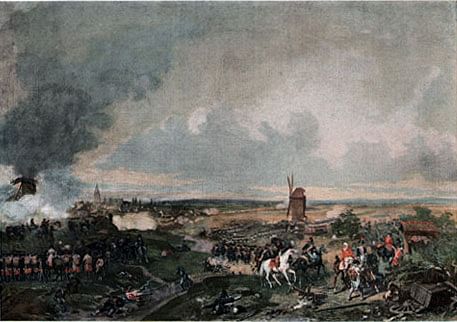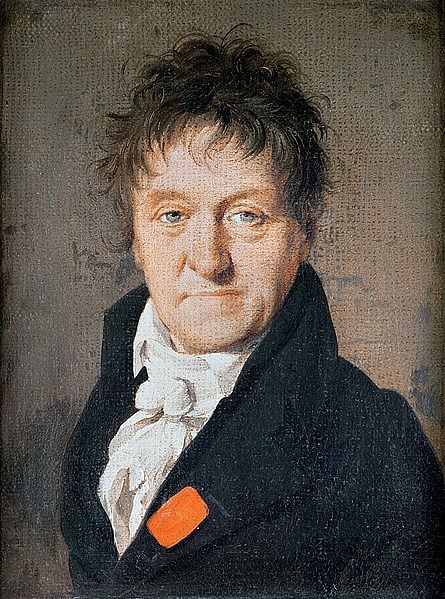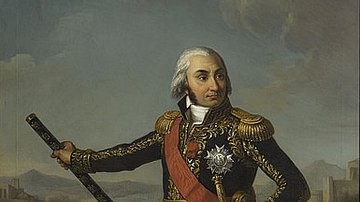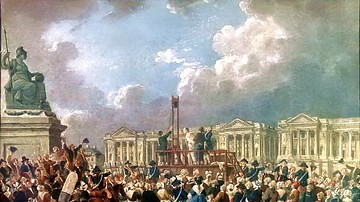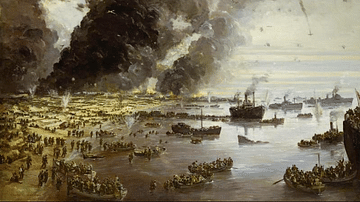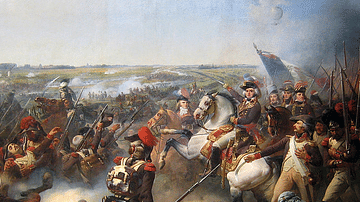The Battle of Hondschoote, fought on 6-8 September 1793, was a major turning point in the Flanders Campaign of 1792-1795 during the French Revolutionary Wars (1792-1802). An army of the First French Republic defeated an Anglo-Hanoverian force commanded by the Duke of York, thereby relieving the Siege of Dunkirk, and potentially saving the French Revolution (1789-1799) from early destruction.
Retreat & Reform
By the summer of 1793, the young French Republic seemed to be on its last legs. Its armies were stretched thinly across multiple fronts and were suffering setbacks on almost all of them. In the south, Spanish soldiers swarmed across the Pyrenees and dealt the French a series of defeats in Roussillon, while Sardinian troops amassed along the Alpine borders. On the Rhine, a French garrison was forced to surrender the city of Mainz to the Prussians, while various rebellions in the French interior bled Republican resources dry. The port city of Toulon, as well as the entire French Mediterranean Fleet, had fallen to the British, who also began a naval blockade in May.
The most perilous front to the Republic's survival was in the northeast, where a massive, multinational army was poised to march on Paris. Like an almighty storm, the Coalition army had swept the French from Belgium before falling on France's fortified border towns. Under the supreme command of Prince Josias of Saxe-Coburg-Saalfeld, the army numbered over 100,000 men at its peak, representing the might of Europe's Ancien Régimes; 50,000 Austrians marched beside 14,000 Dutch, 8,000 Prussians, 7,200 British, 12,000 Hanoverians, and 7,000 Hessians. In April, the Coalition army laid siege to Condé-sur-l'Escaut on the French-Belgian border. The French Army of the North, ordered to relieve the siege, clashed with Coalition forces on 8 May at the Battle of Raismes; the French commander, Auguste Picot de Dampierre was killed, and the French retreated in chaos. For the Coalition, the road to Paris lay wide open.
Coburg was in no rush. A cautious commander, he was determined to leave nothing to chance and decided to finish capturing all the French fortifications on the frontier before moving into the heartland. While this may have seemed prudent, it also destroyed whatever momentum the allies had gained; Condé did not fall to the Coalition until 10 July, while the concurrent Siege of Valenciennes did not end until 28 July. Every day that Coburg lingered beneath the walls of a French fortification was another day the French army could use to strengthen itself.
The French certainly took advantage of this delay. In June, the Jacobins seized control of the government, calling for extreme measures to be taken to ensure the Republic's survival. Executive power was heaped onto a twelve-man Committee of Public Safety, which was tasked with unmasking domestic traitors and winning the war. These two goals were not unrelated, and the ensuing Reign of Terror, implemented to root out and execute counter-revolutionaries, was extended to the armies; in August, Adam Philippe, Comte de Custine, who had replaced Dampierre as commander of the Army of the North, was denounced for his inaction against Coburg's invasion. He was recalled to Paris, arrested, and executed, accused of cowardice. From here on out, the Jacobins meant to motivate France's armies through Terror.
Yet Terror was far from France's only means of defense. On 23 August 1793, France's brilliantly efficient war minister, Lazare Carnot (1753-1823), introduced the Levée en masse, which was essentially a policy of mass conscription and a declaration of total war. All unmarried men between the ages of 18 and 25 were to be drafted into the military, while all citizens ineligible to fight would make uniforms, work in factories, or work in military hospitals. It was an extraordinary administrative feat that allowed the Republic to field 14 armies and 800,000 men within the year. Carnot also made sure new conscripts were mixed into experienced units to foster discipline and training. While Coburg focused on the border fortifications, the French war machine had sprung into action, and the allies' road to Paris was slipping further out of sight.
The Coalition Fractures
Coburg's inaction vexed the British government, which grew more impatient by the day. One of its war goals was the capture of Dunkirk, a port city on the English Channel that was valued both as a bargaining chip and as a strong base for British military operations on the continent. After the fall of Valenciennes, the administration of Prime Minister William Pitt the Younger instructed the British army on the continent to lay siege to Dunkirk at once.
The commander of the British army, Prince Frederick, Duke of York and Albany, obediently obliged; despite Coburg's protests, York put national interest over military cohesiveness and split his soldiers away from the allied army in August. The almighty Coalition force had splintered in two; York led 35,000 British, Hanoverian, and Hessian troops westward toward the sea, while Coburg turned in the opposite direction with 45,000 Austrians, to besiege yet another French town of Le Quesnoy. The rest of the soldiers were split into detachments to maintain a thin line of communication between the two main armies. Many historians have considered this decision to have been a major military blunder, one that saved the French Revolution from destruction and cost the Coalition victory. As Sir Archibald Allison puts it:
Four months of success, which might have been rendered decisive, had been wasted in blamable inactivity; after having broken the frontier line of fortresses, and defeated the covering army of France in a pitched battle, when within fifteen marches of Paris, and at the head of a splendid army of 130,000 men, they thought fit to separate their forces ... from this ruinous decision may be dated all the subsequent disasters of the campaign. (Brown, 92-3)
On the march to Dunkirk, the Anglo-Hanoverian-Hessian force had several skirmishes with French soldiers. One such episode on 8 August almost led to the capture of the Duke of York himself. After a brief encounter with French soldiers at the Battle of Caesar's Camp, York was crossing a bridge when he noticed two lines of cavalry on the other side. Believing these soldiers to be Hanoverians, York, who had "more personal bravery than experience of war", began galloping at full speed towards them. He was stopped by a French émigré officer serving with the Coalition, who recognized the cavalrymen's uniforms as French; he grabbed the duke's bridle and escorted him back the other way, convinced he had saved the duke's life since the French Republic "spared no Englishman" (Brown, 95).

Siege of Dunkirk
After this near-death experience, the Duke of York drove his men hard, marching them relentlessly through brutal summer heat. Finally, on 22 August, they arrived outside Dunkirk, with York setting up his personal headquarters at Furnes. He decided to divide his army in half: while York's troops besieged the city, Freytag's men formed a cordon almost 20 miles long, stretching from Hondschoote to Ypres. By 24 August, the French garrison had been driven from the suburbs and became trapped within Dunkirk itself; the siege had begun.
But even as York's men dug in, they knew that their efforts would be fruitless without support from the Royal Navy. Since Dunkirk was a port city, its garrison of 8,000 men could continue to be resupplied from sea indefinitely. The Royal Navy Channel Fleet had been on its way to blockade Dunkirk's harbors but was blown off course by a sudden storm in the last days of August; one lonely frigate, HMS Brilliant, found its way to Dunkirk but was blown away in another storm three days later. York, who lacked sufficient artillery, could do nothing but wait.

Meanwhile, the French garrison proactively harassed the besieging army. On 27 August, French gunboats shelled York's helpless troops from offshore, while early in September the city's drains were opened, flooding the eastern fields and the British trenches with two feet of water. Around the same time, disease struck York's troops, carrying men off at an alarming rate. Yet although the siege was going poorly for the allies, it was only a matter of time before the Royal Fleet could regroup and starve the defenders into submission. The French required reinforcements if they were to prevail; fortunately, help was on the way.
Houchard Takes Command
Jean-Nicolas Houchard would have been the first to admit that he had no business commanding an army. Described by historian Ramsay Weston Phipps as "brave but stupid ... a proved patriot" (209), Houchard had served in French armies since the age of 16; now 55, he had never commanded anything larger than a company until the previous few months, when he rapidly rose through the ranks of colonel and brigadier. He briefly served on General Custine's staff until August 1793, when the Jacobin regime recalled Custine and many other aristocratic officers to Paris where they were put to death.
Houchard, a commoner whose battle-scarred face and gruff demeanor seemed the furthest thing imaginable from aristocracy, was given command of the Army of the North, partially because most other candidates had been purged. Yet from the start of his tenure, Houchard was constantly reminded he was on thin ice. In his hometown of Strasbourg, extremists accused him of treason and threatened to lynch his wife and children. He failed to earn the respect of his own men, who laughed at his desperate attempts to appear patriotic by strutting about camp in a red cap of liberty. Houchard recognized he was out of his element and seemed to regard his new command as a curse, writing, "is there any more cruel position than this?" (Phipps, 211)
Shortly after taking command, Houchard was joined by Rene Lavasseur and Pierre Delbrel, representatives-on-mission who had been sent by the Jacobins to keep a close eye on Houchard. The representatives came with orders from Carnot himself, demanding that Houchard march to relieve the siege of Dunkirk at once. Around this time, Houchard learned of Custine's fate, news that sent him spiraling into despondence. "Then there is a regular determination to guillotine generals?" he asked Lavasseur one night. "And you, too, if you betray us," Lavasseur coldly replied (Phipps, 224). Wishing to avoid Custine's fate, Houchard adhered to the orders from Paris and led his 45,000 men towards Dunkirk.
First Day: 6 September
By 5 September, Houchard had positioned his army around the town of Cassel, facing Freytag's covering force centered around Hondschoote, 10 miles (16 km) southeast of Dunkirk. Made nervous by this concentration of French forces, Freytag sent two columns to take the town of Arneke, from where he could better observe French movements. The Hanoverians captured the town, but only after encountering steep French resistance; the heavy fighting convinced Freytag that an attack was coming, causing him to anxiously write the Duke of York for instructions.
Houchard, meanwhile, was faced with a decision. He could march around Freytag's force and threaten York's rear, forcing the British to break off the siege to face him; or he could mount a direct, frontal attack against Freytag's men. While Houchard preferred the first plan, he was overruled by Lavasseur and Delbrel, who urged a quick and decisive victory. Reluctantly, Houchard split his army into six columns, with which he would attack key points across Freytag's 20-mile-long line.
The attack came at daybreak on 6 September. On the right, the Hanoverians were chased from their forward outposts while Houchard himself led the attack from Cassel, pushing northward toward the River Yser. A French division commanded by General Jean-Baptiste Jourdan pushed Freytag's Hessians out of the town of Herzeele; this small victory encouraged Houchard, who ordered Jourdan to push on across the Yser to Bambecque. The bridge to Bambecque was guarded by Freytag's men, who repulsed Jourdan's first assault, aided by a sudden thunderstorm. Protracted fighting began around the bridge, and as the battle wore on, French ammunition began to run out. Jourdan wrote to Houchard to ask if the advance should be called off; the general's chief-of-staff wrote back, telling Jourdan that, "we must conquer at any price. Failing cartridges, are there not bayonets?" (Phipps, 228)
At 6 p.m., a regiment under Captain Jean-Baptiste Bernadotte forded the river and charged the Hanoverians with bayonets, forcing the allies to withdraw from Bambecque. Knowing his men were fatigued, Houchard wished to stop there for the night, but was again overruled by the representatives who told him, "free men were never too tired to fight the slaves of tyrants" (ibid). The exhausted French pushed onward to Rexpoede, which Jourdan quickly captured. At 8 p.m., Freytag finally ordered a general retreat toward Hondschoote, but the retreat took a while to get underway; as Freytag attempted to organize it, he and Prince Adolphus, the Duke of York's younger brother, unwittingly strayed into the French lines, where they were captured. Prince Adolphus quickly managed to escape, but Freytag was wounded in the struggle and remained a prisoner.

He would not remain a captive for long; Freytag's second-in-command, General Johann-Ludwig Wallmoden, was informed of Freytag's capture and launched a ragged nighttime assault on Rexpoede to free him. Wallmoden's attack surprised the exhausted French, driving them from Rexpoede and almost capturing Houchard himself in the process. Some panicked French soldiers ran all the way back to their headquarters at Cassel. Freytag was rescued but too wounded to lead, so Wallmoden retained the command. In the small hours of 7 September, he pulled the Hanoverians back to Hondschoote.
Second Day: 8 September
7 September saw a lull in the fighting, as Houchard rested his tired troops and reassessed his position. Before him, 13,500 Hanoverians remained positioned in Hondschoote, faced with a French force almost three times their number. Houchard planned a three-pronged attack for the morning of 8 September; General Leclaire would attack the village from the left, two divisions under Jourdan and Colonel Vandamme would assault the center, while General Colaud moved in on the right.
At 4 a.m. on 8 September, Colonel Vandamme moved his skirmishers into position along the road between Rexpoede and Hondschoote to cover the main French attack. The road, filled with sunken ditches and lined with hedges, provided excellent cover for the skirmishers, allowing them to pick off Hanoverian soldiers for hours before Wallmoden drove them off in a counterattack. As morning dawned, Vandamme attempted a more spirited charge that was repulsed; a second attack by Jourdan met the same fate.
Meanwhile, as Vandamme and Jourdan held the center, Leclaire began marching eastwards, slowly approaching Hondschoote along a flooded road. At the same time, General Colaud's rightwing attack became bogged down by Hanoverian cannon fire; Houchard placed himself in front of Colaud's troops and, drawing his sword, led a fierce bayonet charge against the Hanoverian entrenchments. All three divisions were closing in at the same time, putting pressure on every side of Wallmoden's trapped army at once. In the center, Jourdan sustained a minor wound to the chest, and his command was taken up by Delbrel, one of the representatives-on-mission who had no military experience.
Delbrel moved at precisely the right moment, timing his charge with Houchard's bayonet attack on the right. At around the same time, Leclaire's troops pushed their way into Hondschoote itself. The Hanoverian line broke, and the allies began a disorderly retreat to York's headquarters at Furnes. With the defeat of his covering army, York was now exposed, sandwiched between Houchard's men at Hondschoote and the 8,000-man French garrison in Dunkirk. With still no sign of the Channel Fleet, York held a council of war that night, where the decision was made to retreat. Around midnight, the siege was lifted, and York ordered all his soldiers to pull back to Furnes. The battle had been a French victory, and Dunkirk was saved.
Aftermath
The Siege of Dunkirk and the Battle of Hondschoote proved one of the deadliest operations of the war so far. The Duke of York had lost roughly 3,000 men in the siege, mainly to disease, while the Hanoverians had lost 2,236 men at Hondschoote, bringing York's total loss over the course of the operation to somewhere around 5,000. The French also sustained significant losses, somewhere between 1,500-2,500 men.
General Houchard had proven himself in battle and had won a great victory over the Coalition. But even this would not save him from a grisly fate. Immediately after the battle, Houchard made little attempt to harass York's retreat, ignoring his orders from the Committee of Public Safety to "hurl the English into the sea" (Palmer, 94). When Lavasseur urged him forward, Houchard refused, pointing out that Lavasseur was not a military man. Perhaps victory had made him more confident in his ability to lead, or perhaps he was thinking of his exhausted and bloodied soldiers. In either case, his inactivity proved fatal. For failing to capitalize on his victory, Houchard was stripped of his command and recalled to Paris. There, he was accused of cowardice and guillotined on 15 November 1793. He had commanded the Army of the North for six weeks.
Command of the army fell to Jourdan, who capitalized on the victory at Hondschoote to defeat the Austrians at the Battle of Wattignies a month later. Together, the French successes at Hondschoote and Wattignies helped save the French Republic from destruction, contributing greatly to the French victory in the broader War of the First Coalition (1792-1797).

